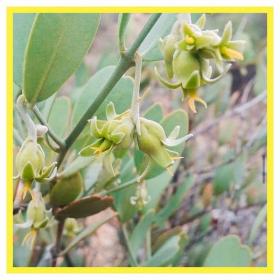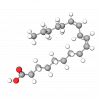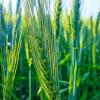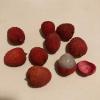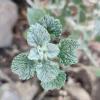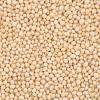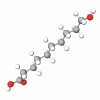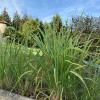Human sebum is a lipid-rich secretion of sebaceous glands, essential for skin barrier integrity, hydration, and antimicrobial defense. Its average composition among humans includes:
- Triglycerides & free fatty acids (~57.5%)
- Wax esters (~26%)
- Squalene (~12%)
- Sterols & sterol esters (~4.5%)
Key fatty acids include palmitic acid (16:0), oleic acid (18:1), linoleic acid (18:2), and sapienic acid (16:1Δ6). Sapienic acid is particularly human-specific, contributing to antimicrobial defense and skin physiology. Decreases in sebum production with age, stress, or environmental factors lead to dryness, irritation, and barrier dysfunction.
According to the manufacturer, L22® is a sebum-mimetic botanical complex designed to replicate the lipid profile of healthy 22-year-old human sebum when production is at its peak. Its composition balances wax esters, squalene, sterols, and fatty acids in ratios that are close to natural sebum:
- Macadamia oil esters provide palmitoleic acid (16:1), a botanical (functional) analog of sapienic acid.
- Jojoba oil esters replicate the wax ester fraction of sebum.
- Phytosqualene substitutes for human squalene.
- Phytosterols & phytosteryl macadamiate substitute for cholesterol and sterol esters.
- Jojoba Oil/Macadamia Seed Oil Esters – mimic sebum's wax esters, providing hydrophobic protection and emollience.
- Squalene (botanical) – replaces human squalene, maintaining antioxidant and emollient roles.
- Phytosteryl Macadamiate – ester of phytosterol and macadamia fatty acids, serving as a cholesterol ester analog.
- Phytosterols – plant-derived sterols that structurally and functionally substitute for cholesterol in sebum.
- Tocopherol – antioxidant defense, stabilizing the lipid mixture against oxidation.
Combined into a balanced complex, it reconstructs the lipid classes of sebum using stable, plant-derived analogs, avoiding animal-derived or synthetic substitutes. L22® is a safe complex, non-irritant to skin, not a sensitizer, not mutagenic. Eye contact may cause mild irritation. It is also eco-friendly, biodegradable, with low bioaccumulation potential and low soil mobility.
